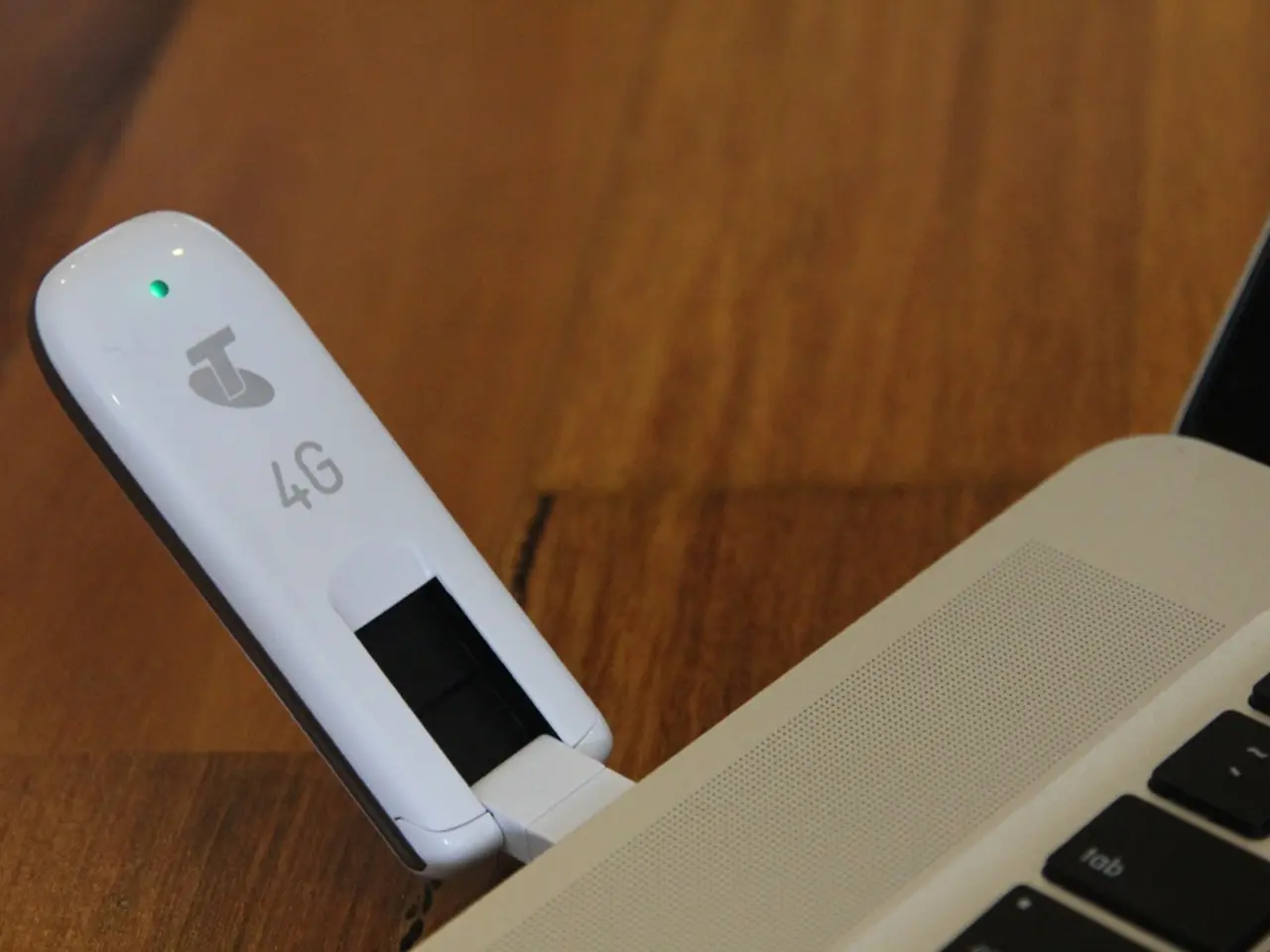Methods of Data Transfer: Simplex and Duplex in Communication Systems and Networks
In the realm of data transmission, three primary modes dominate the landscape: Simplex, Half-Duplex, and Full-Duplex. Each mode offers unique advantages and limitations, making them suitable for various applications.
Simplex is the simplest transmission mode, allowing data flow in only one direction. It is commonly found in devices like keyboards sending input to a CPU or traditional monitors displaying output. The channel uses the entire bandwidth for one-way transmission, making it cost-effective and free from collision risks. However, the main drawback is the lack of feedback, as the receiver cannot respond directly to the sender.
Half-Duplex, on the other hand, supports two-way communication but not simultaneously. At any given time, one device transmits while the other receives, and they switch roles when needed. This mode shares the channel capacity but only one device uses it at a time. A common example is walkie-talkies. It allows bidirectional communication with moderate bandwidth utilization and complexity.
Full-Duplex is the most advanced mode, enabling simultaneous two-way communication. Both devices can send and receive data at the same time, doubling bandwidth utilization compared to simplex and half-duplex. Examples include mobile phones and landlines. It requires more sophisticated hardware and protocols to avoid collisions but provides the most efficient use of the communication channel.
Full-duplex offers maximum throughput and efficiency, lowest latency for interactive applications, true real-time communication, better user experience for interactive applications, and higher overall bandwidth utilization. However, it comes with challenges such as duplex mismatch, crosstalk between transmit and receive channels, echo and interference problems, and flow control complications. Echo cancellation uses sophisticated signal processing to distinguish between transmitted and received signals on the same channel.
Examples of simplex communication include traditional radio and television broadcasting, public address systems, printers, and one-way railroad communication systems. Half-duplex communication can be found in walkie-talkies, citizens band (CB) radio, early Ethernet networks, traditional two-way radios, and traditional railroad communication systems.
Full-duplex systems can be implemented using separate physical channels, frequency division, echo cancellation, or time division. Full-duplex applications include modern web servers handling multiple simultaneous connections, video conferencing and VoIP systems, real-time collaborative editing platforms, high-frequency trading systems, and gaming servers requiring low-latency interaction.
In network design, performance requirements, media selection, protocol selection, cost constraints, and power considerations are crucial when choosing the appropriate transmission mode. While full-duplex systems have more complex hardware requirements, higher implementation costs, more sophisticated signal processing needed, greater power consumption, and more complex error handling and flow control mechanisms, they offer the advantage of true real-time interaction.
- In the context of data-and-cloud-computing, advanced technology such as Full-Duplex communication mode, with its ability to simultaneous two-way data flow, is essential for efficient data analysis using complex software.
- The information exchange in a networked software system benefits greatly from the efficient bandwidth utilization provided by Full-Duplex technology, ensuring low latency and interactive applications.
- To manage and store large data sets, robust hardware is important, including technologies capable of handling Full-Duplex communication, ensuring seamless and uninterrupted data transmission.
- As businesses increasingly rely on technology and information exchange, the importance of Full-Duplex technology in networked software systems, providing true real-time communication and maximizing throughput, becomes increasingly apparent.




